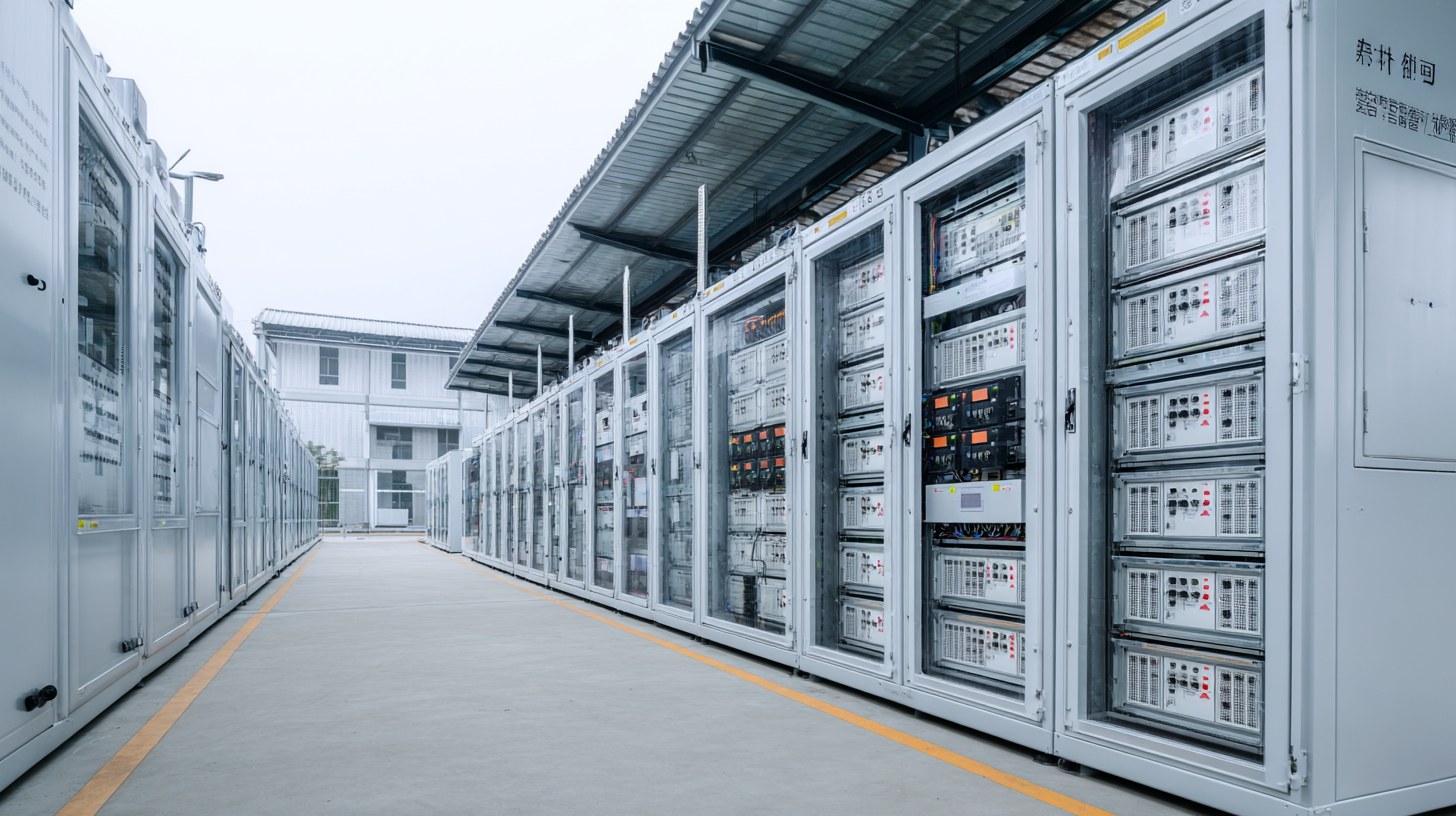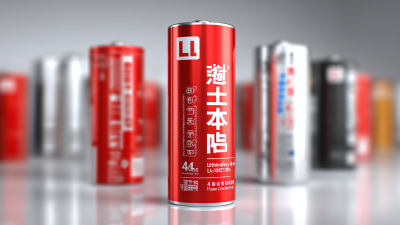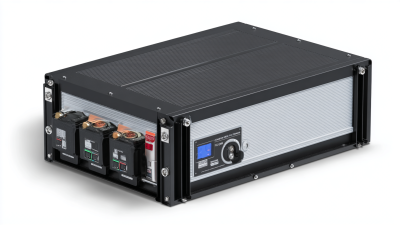
In today's rapidly evolving energy landscape, optimizing energy storage solutions has become paramount for both commercial and residential applications.
 Rack Lithium Battery technology stands out as a cutting-edge option that not only enhances energy efficiency but also supports sustainability initiatives.
As the demand for cleaner and more efficient energy sources grows, understanding how to leverage Rack Lithium Battery systems can significantly improve performance and reduce costs.
This article explores the critical aspects of Rack Lithium Battery optimization, providing practical strategies and insights that will enable users to maximize their energy storage capabilities.
By harnessing the potential of this innovative technology, you can ensure that your energy solutions are not only effective but also aligned with the future of energy management.
Rack Lithium Battery technology stands out as a cutting-edge option that not only enhances energy efficiency but also supports sustainability initiatives.
As the demand for cleaner and more efficient energy sources grows, understanding how to leverage Rack Lithium Battery systems can significantly improve performance and reduce costs.
This article explores the critical aspects of Rack Lithium Battery optimization, providing practical strategies and insights that will enable users to maximize their energy storage capabilities.
By harnessing the potential of this innovative technology, you can ensure that your energy solutions are not only effective but also aligned with the future of energy management.
Rack lithium battery technology has emerged as a pivotal advancement in energy storage systems, particularly for its role in maximizing efficiency and supporting the renewable energy sector. Unlike traditional lithium-ion batteries, this technology allows for scalable energy solutions, making it particularly well-suited for commercial and industrial applications. Reports suggest that energy storage technologies are crucial for integrating renewable resources and facilitating the global transition towards decarbonization. In fact, optimal scheduling models are being developed to enhance the economic and environmental effectiveness of these systems.
Tips: When considering rack lithium battery technology, assess your storage needs carefully. Determine the right capacity and discharge rate to align with your energy demands. Additionally, ensure that the system you choose is compliant with the latest safety standards, as lifecycle management and risk assessment are vital in minimizing incidents linked to lithium-ion batteries.
The benefits of adopting rack lithium battery technology extend beyond just energy efficiency. Homeowners and businesses using these systems can effectively harvest solar energy, allowing for increased autonomy and reduced reliance on grid power. Moreover, advancements like solid-state batteries promise to revolutionize the energy storage landscape, offering improved safety and lifespan while addressing some of the current limitations associated with lithium-ion batteries. As these innovations continue to unfold, the potential for sustainable energy solutions grows exponentially.
| Parameter | Value | Unit |
|---|---|---|
| Nominal Voltage | 48 | V |
| Capacity | 200 | Ah |
| Energy Density | 150 | Wh/kg |
| Cycle Life | 5000 | Cycles |
| Charge Time | 2 | Hours |
| Discharge Rate | 1C | C |
| Operating Temperature | -20 to 60 | °C |
| Weight | 55 | kg |
When optimizing energy storage systems using rack lithium battery technology, several key factors emerge as critical to maximizing efficiency. One of the foremost considerations is the battery chemistry. Lithium iron phosphate (LiFePO4), for example, offers a longer lifespan and enhanced thermal stability compared to traditional lithium cobalt oxide batteries, making it a favorable choice for high-demand applications. According to a report by the International Energy Agency, advancements in lithium-ion technology are projected to increase energy density by up to 30% by 2030, significantly impacting storage capacity and efficiency.

Additionally, the design and configuration of the battery rack play a pivotal role in energy management. Proper ventilation and thermal management systems are essential to prevent overheating, which can lead to reduced efficiency and even premature battery failure. Research from Frost & Sullivan indicates that optimizing cooling systems can enhance battery performance by as much as 15%. Furthermore, integration with smart energy management systems allows for real-time monitoring and adaptive charging, contributing to better utilization of energy and prolonged battery life. By focusing on these factors—battery type, thermal management, and system integration—companies can significantly enhance their energy storage solutions and realize substantial operational efficiencies.
Optimizing your energy storage with rack lithium battery technology requires careful attention to installation and configuration. Proper setup not only enhances performance but also ensures safety and longevity of the battery system. When retrofitting systems, ensuring that the hybrid inverter is compatible with the selected battery capacity is crucial. Regular maintenance checks for connections and firmware updates can significantly improve efficiency.
Tips: Always follow manufacturer guidelines during installation. Maintain sufficient airflow around the battery rack to prevent overheating. For systems that operate in critical environments, consider integrating immersion cooling technology, which can protect components and improve thermal management.
Additionally, it's important to assess risk factors throughout the lifecycle of lithium-ion batteries. Educate yourself about thermal runaway and ensure your installation has adequate fire suppression measures in place. Regularly monitor the system for any signs of wear or malfunction, and keep safety protocols readily accessible to mitigate hazards effectively.
To ensure maximum performance of rack lithium battery systems, regular monitoring and maintenance strategies are crucial. Implementing a systematic approach to performance tracking can help identify any potential issues before they escalate. Utilize advanced monitoring systems to keep an eye on battery voltage, temperature, and charge cycles. This data will not only enhance safety but also optimize the lifespan of the battery, ensuring that energy storage remains efficient and reliable.
Tips: One effective strategy is to schedule routine inspections every three to six months to check for signs of wear or degradation. Additionally, maintaining a clean and ventilated environment around battery racks can prevent overheating and prolong their service life. Furthermore, utilizing software tools that provide insights into usage patterns can help in adjusting energy storage utilization for better performance.
Another important aspect of maintenance is balancing the cells within the battery pack. Imbalance can lead to reduced overall efficiency and lifespan. Regularly assessing the state of charge among the cells and performing equalization charging when needed can ensure all cells function optimally. Implementing these practices will significantly enhance the reliability and efficiency of your energy storage system.
Emerging innovations in rack lithium battery technology are paving the way for enhanced energy storage solutions that promise to significantly boost efficiency. As energy demands continue to escalate, advancements such as higher energy density, faster charging times, and improved thermal management systems are becoming critical. These advancements enable users to store and utilize energy more effectively, minimizing waste and maximizing performance. Innovations like solid-state batteries and advanced cell chemistries are setting new benchmarks, allowing for longer lifecycle and quicker discharge rates, which are essential for both commercial and residential applications.
Moreover, the integration of smart technology in rack lithium battery systems is revolutionizing how energy storage is managed. Digital monitoring and predictive analytics provide real-time data on battery performance, enabling proactive maintenance and optimization. This intelligence not only facilitates better energy management but also enhances safety and reliability. As these technologies continue to evolve, they offer exciting possibilities for a more sustainable future, ensuring that energy storage remains at the forefront of the transition towards renewable energy sources. With these emerging trends, the potential for increased efficiency in energy storage is not just a possibility—it's on the brink of realization.






